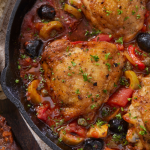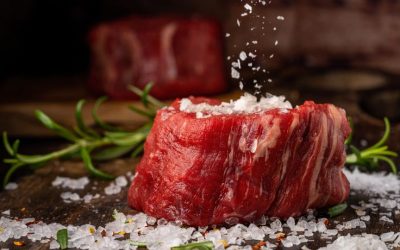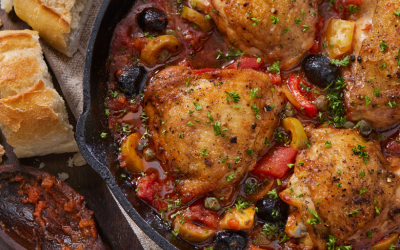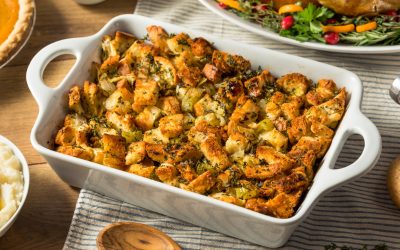
What the Latest Wave of Miami Restaurants Closures Says
About the Cost of Feeding a City Always Hungry for More. It’s strange, watching a restaurant go quiet.
The air still smells like garlic confit and ambition. The walk-in’s humming. The reservation book has a few names penciled in—just not enough to keep the lights on. And when the last table leaves, it’s not with a bang. It’s just… over.
You’ve seen the headlines: Axios, the Miami Herald, New Times. One by one, Miami’s restaurants are going quiet. The city has been full of these endings lately. The articles talk about heat, rent, or “changing trends,” but from the other side of the stove, I can tell you: the truth is messier, heavier, and much harder to plate.
The Glamour vs The Grind
Miami became sexy for chefs again. Michelin stars rolled into town. Investors showed up with branding decks and white tablecloth dreams. We got photo ops, launch parties, $29 cocktails served with tweezers—and for a minute, it felt like the scene was finally getting its due.
But back in the kitchen, behind those glam dining rooms and curated playlists, the grind didn’t change. It got worse.
Line cooks were still leaving mid-shift. Rents climbed. Guest counts stayed unpredictable. We were plating dishes worthy of press—but praying for a packed Friday night just to hit payroll.
It’s easy to fall for the story: the idea that a rising food city lifts all boats. But the truth is, Miami got saturated. Too many openings. Too many concepts. And not enough diners to go around, at least not regularly.
So even the good restaurants—the ones run with soul, consistency, and actual culinary chops—started falling through the cracks.

The real math or running a restaurant
Most people don’t realize how close to the edge restaurants always operate. The margins are thin on a good day. Add inflation, rising food costs, higher wages (which we’re glad to pay), and ridiculous rent hikes—and suddenly, there’s no safety net.
You need a full house on Friday just to survive Monday. You hope Saturday is slammed because Tuesday is always dead. And you pray that someone doesn’t cancel a 10-top without notice, because that might make the difference between being in the red or scraping by.
According to Axios Miami, “This summer was among the slowest in memory… restaurants are seeing record-low reservations across the board.” (Axios)
So we adjusted. We trimmed staff. We ran leaner. We cut hours. But the hole just kept widening. When it gets that bad, the question stops being “how do we keep going?” and becomes “how much longer can we bleed?”
The Diners Changed, Too
People used to come back. They had a favorite dish. A favorite server. A rhythm. Now? It’s one-and-done. Snap a pic, tag the restaurant, and move on to the next place that just opened. We’re chasing virality, not loyalty.
Add in the shift toward delivery apps, private chefs, and dinner parties with a view, and you’ve got a different dining culture altogether.
None of that is bad. But it makes the traditional restaurant model—brick and mortar, full staff, consistent hours—feel like a beautiful, crumbling cathedral. Sacred. But maybe unsustainable.
This Summer Was a Tipping Point

We thought COVID was the storm. But 2025 came in quiet and left devastation. Restaurants that had survived the pandemic—barely—closed anyway.
The Miami New Times reported major closures: Sugarcane Raw Bar, Sardinia, Villa Azur, Ms. Cheezious, Red Farm, Itamae AO. Michelin-starred kitchens. Legacy spots. All gone. (Miami New Times)
The Miami Herald counted nine major closures just halfway through the year, pointing to “rising rents, labor shortages, and unsustainable expectations.” (Miami Herald)
And according to Axios, some of the restaurants are taking “summer pauses” and plan to return—but let’s be honest, not all of them are coming back. (Axios follow-up)
And many that didn’t officially close just… paused. Quietly. Temporarily. Maybe forever.
What It Feels Like
It’s not loud. There are no sirens. No press conferences. Just a chef walking into a dining room and realizing they can’t justify prepping for a night that won’t come.
You feel it in your bones. That mix of guilt and relief. Like someone finally said it was okay to stop trying to save something that’s slowly drowning.
We survived COVID. This summer broke us.
Not because we stopped caring. But because we couldn’t keep pretending it was working.
Where Do We Go From Here?

I don’t know. Is it that we need fewer concepts and more community. Maybe we need to let go of the idea that every meal needs to be an experience. Perhaps we need to tip better. Or show up when it rains.
What I do know is this: behind every restaurant that closes, there are people who gave everything they had. It’s not just a headline. It’s a heartbreak.
And from the other side of the stove, I can tell you—this isn’t just a trend. It’s a slow unraveling. And we feel every thread.








